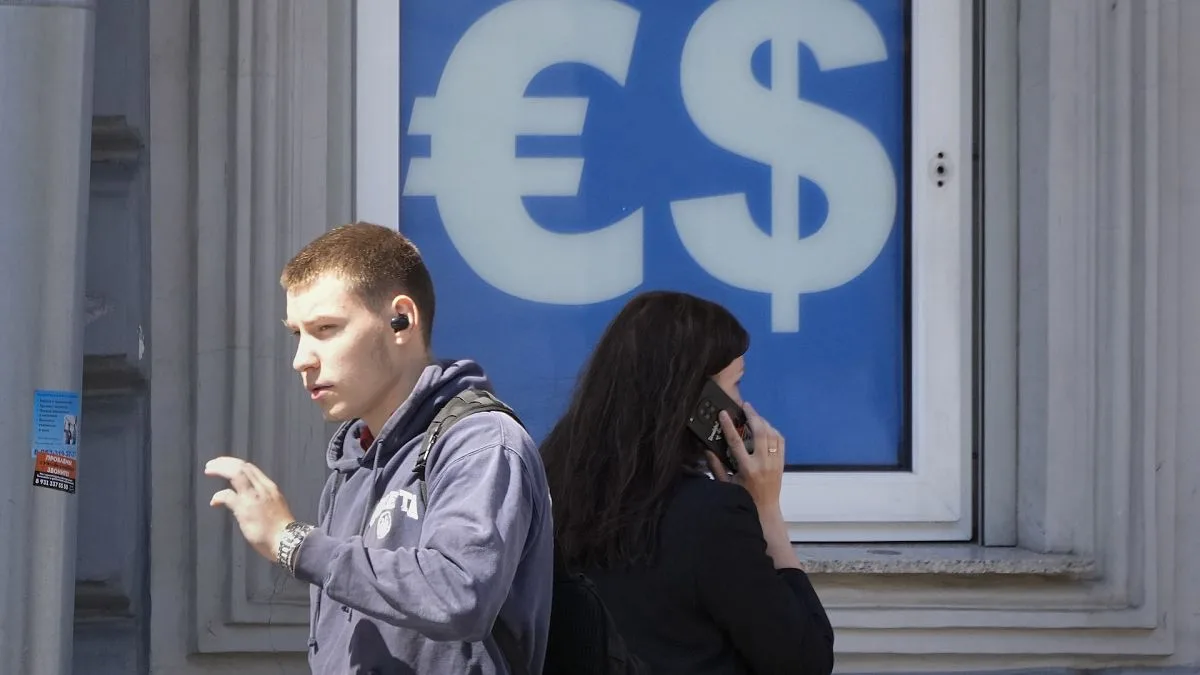The euro has recently slipped to a two-month low against the US dollar, following the release of the Federal Reserve meeting minutes. This trend may persist as expectations shift regarding interest rate cuts from both the European Central Bank (ECB) and the Federal Reserve.
The euro fell to its lowest level since August 13 against the US dollar, driven by insights from the Federal Reserve’s recent meeting minutes. These minutes revealed a division among Federal Reserve officials on the necessity of a 0.5% rate cut, indicating a slower approach to future rate reductions which subsequently boosted the US dollar’s strength.
Since late September, the euro has declined by 2.3% against the dollar, dropping from 1.12 to just above 1.09. With the ECB’s upcoming policy meeting on the horizon, analysts predict that the euro’s weakness could continue, particularly with expectations of the central bank implementing its third rate cut of the year.
Shifting Expectations for the ECB and the Fed
Interestingly, the euro’s recent performance against the dollar has been more influenced by the Federal Reserve’s decisions than by the actions of the ECB. In September, the Fed’s significant rate cut led to a decreased dollar value and propelled the euro to a near three-month high. However, in October, expectations began to shift toward a more moderate rate cut from the Fed and a dovish approach from the ECB.
This change in outlook regarding future rate trajectories for both central banks could maintain pressure on the euro. The Fed’s 0.5% rate cut, initially seen as a response to labor market slowdown, may have been exaggerated. While non-farm payroll data indicated slower employment growth and an increase in the jobless rate, the September jobs report alleviated these concerns by showing better-than-expected job creation and a drop in unemployment rates.
The meeting minutes hinted that some participants favored a more modest 25 basis point reduction while others could likewise support such an approach. Market expectations now suggest that a quarter-percentage-point cut is likely to occur in both November and December, rather than an aggressive half-percentage-point reduction.
Following the Federal Reserve meeting, US government bond yields rose, with the benchmark 10-year treasury yield hitting 4.07%, marking its highest point since July. This trend is believed to further bolster the dollar’s position in the market. As research strategist Dilin Wu from Pepperstone noted, “Combined with increasing US Treasury yields and a widening rate gap with G10 peers, this reinforces the dollar’s strength.”
In contrast, the ECB is anticipated to adopt a more dovish stance amid signs of deteriorating economic indicators and falling inflation rates. Wu articulated, “The ECB seems more inclined toward a dovish approach, while remaining reactive to data trends.”
As per Eurostat’s latest flash estimate, the Eurozone Consumer Price Index (CPI) declined to 1.8% year-on-year in September, slipping under the ECB’s 2% target and down from 2.2% in August. Furthermore, Germany, the Eurozone’s largest economy, is facing hurdles from a manufacturing downturn, as evidenced by a drastic decline in ZEW Economic Sentiment, recorded at 3.6 in September, the lowest since October 2023. Wu noted, “The economic outlook appears increasingly fragile,” highlighting concerns for the Eurozone’s future.
Although the ECB previously positioned itself with a hawkish rate cut in September and claimed no prior commitment to a specific rate path, recent weak data has prompted market speculation toward a more probable quarter-point rate cut in their upcoming meeting.
Euro Faces Challenges Amid Rising Middle East Tensions
Additionally, ongoing conflicts in the Middle East could further pressure the euro, especially considering the potential for escalating energy prices. Since Russia’s invasion of Ukraine, the Eurozone has contended with a spike in living costs and economic stagnation, a scenario that could be exacerbated if tensions in the Middle East escalate into broader regional conflicts.
In contrast, the US dollar is expected to emerge as a safe-haven asset, benefitting from the US’s geographic distance from the conflict and its robust economy. Simultaneously, the European Union grapples with internal political uncertainty, as the rise of far-right movements in France and Germany presents additional complications.
Moreover, increasing tensions with China over tariffs related to electric vehicles threaten to further impact the Eurozone’s economic health. Consequently, the euro is likely to remain under pressure in the foreseeable future.
Photo credit & article inspired by: Euronews



